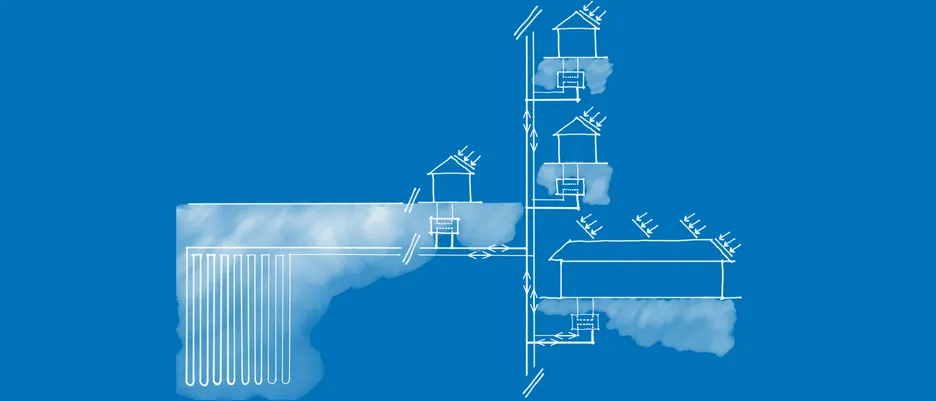Increase of the Urban Use of Renewable Energies through Low-Temperature District Heating Networks
Today's local heating networks operate at a temperature level that is significantly higher than the ambient temperature. As a result of the temperature difference to the environment, distribution and exergy losses and a more difficult integration of renewable energy sources are the consequences. Low temperature networks (see "cold local heating", "anergy networks") are an innovative approach to facilitate the integration of renewable energy sources. In urban districts, thermal networking at a low temperature level (in the range of the ground temperature) allows renewable energy sources as well as ambient and residual heat potentials to be used, which was not possible so far. Low-temperature networks also offer great potential by minimising network losses to the environment and by shifting the heat within the neighbourhood in space and time. Based on an example quarter with urban density, the research project analyses and defines: Limit values of heat demand, storage capacity and seasonal use of the network and storage facilities, integration of various energy conversion technologies and the economic efficiency of the low-temperature network. The resulting planning recommendations should make it possible to easily integrate the networks into the planning process from the beginning of the neighbourhood planning and to tap further efficiency potentials by using "residual heat".
The research project is funded by the research initiative “Zukunft Bau” of the Federal Institute for Building, Urban Affairs and Spatial Research. (Reference number: SWD-10.08.18.7-15.33)
